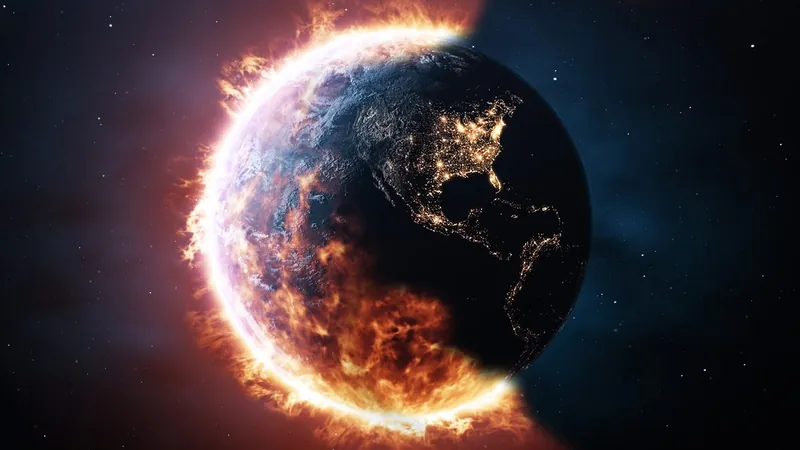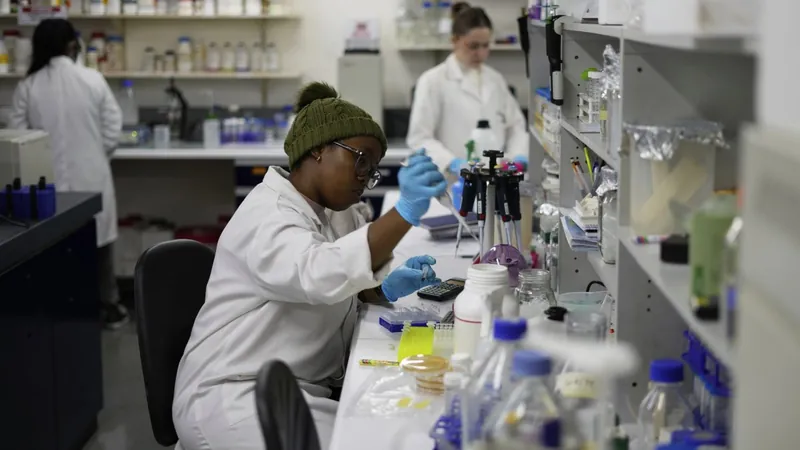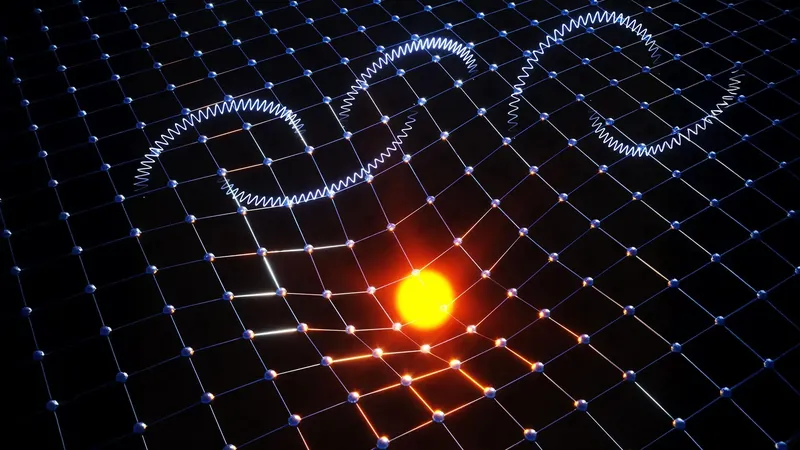
The Cosmic Threats That Could End Life on Earth: Are We Ready for Alien Viruses and Asteroids?
2025-05-29
Author: John Tan
When Apocalyptic Events Meet Reality
The concept of Earth's destruction has become a favorite theme for tabloids and blockbuster movies. From asteroid impacts to alien viruses and solar flares, the threats we face from space seem endless and dramatic. But how real are these cosmic risks? Should we be stockpiling canned food or simply enjoying our lives?
Asteroids: The Hidden Menace
Asteroid impacts captivate our imagination, and for good reason. Hollywood has taught us that massive space rocks can unexpectedly plunge into Earth, causing massive devastation. Fortunately, while these impacts can be catastrophic, very large asteroids are quite rare. According to Donald Yeomans, manager of NASA's Near-Earth Object Program, around 95% of near-Earth asteroids larger than 1 kilometer have been tracked, and none pose a significant threat.
NASA continues to monitor nearly 300 near-Earth asteroids, refining our understanding of their paths. While catastrophic collisions are infrequent, smaller asteroids do occasionally enter Earth's atmosphere, as seen in 2013 when one exploded over Chelyabinsk, Russia, releasing energy equivalent to 30 Hiroshima bombs and injuring over a thousand people.
The Supernova Scenario: A Distant Threat?
Imagine a star exploding in our neighborhood, showering Earth with high-energy radiation. This is precisely what occurred in 1054 when a supernova created the Crab Nebula, visible even during the day. While such events are rare, scientists estimate that a nearby supernova could threaten Earth's atmosphere if it occurred within 33 light-years. Luckily, current data suggests no immediate danger from such stars near our planet.
Solar Flares: A Glimpse of Solar Fury
Our sun may seem placid, but it can unleash massive solar flares capable of disrupting technology on Earth. In 1989, a powerful flare knocked out Canadian electricity grids for hours. Despite these occurrences, the Earth's magnetosphere protects us from the worst radiation effects. Still, understanding and predicting solar flares is crucial, especially for astronauts who venture beyond Earth.
The Alien Virus Paranoia
Returning astronauts from the Apollo missions carried more than just Moon rocks; they brought back fears of potential extraterrestrial pathogens. NASA took precautions to ensure that no harmful microbes could escape into Earth's ecosystem. Today, the samples being collected from Mars by the Perseverance rover are also subject to stringent quarantine protocols to safeguard our planet.
While these cosmic threats may sound terrifying, advances in technology and awareness help mitigate the risks. From asteroid tracking to solar flare forecasting, humanity is better equipped than ever to face the unknown. Ready for the next deep-space challenge?




 Brasil (PT)
Brasil (PT)
 Canada (EN)
Canada (EN)
 Chile (ES)
Chile (ES)
 Česko (CS)
Česko (CS)
 대한민국 (KO)
대한민국 (KO)
 España (ES)
España (ES)
 France (FR)
France (FR)
 Hong Kong (EN)
Hong Kong (EN)
 Italia (IT)
Italia (IT)
 日本 (JA)
日本 (JA)
 Magyarország (HU)
Magyarország (HU)
 Norge (NO)
Norge (NO)
 Polska (PL)
Polska (PL)
 Schweiz (DE)
Schweiz (DE)
 Singapore (EN)
Singapore (EN)
 Sverige (SV)
Sverige (SV)
 Suomi (FI)
Suomi (FI)
 Türkiye (TR)
Türkiye (TR)
 الإمارات العربية المتحدة (AR)
الإمارات العربية المتحدة (AR)